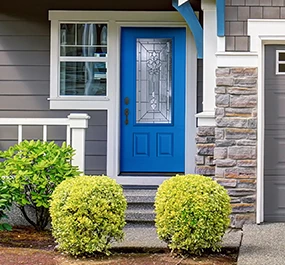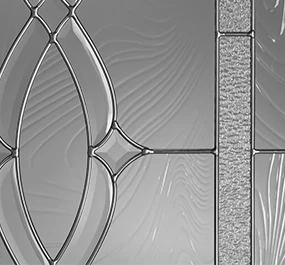Ordering materials will look a little different for homebuilders in the large multifamily niche. These projects are built to commercial specs, which means stricter standards and less flexibility for choosing materials and products.
Doors are a good example of this difference according to Joe Williams, owner of Atlanta-area Williams Building Products.
Williams has been in the building products business for 40 years as a distributor. He supplies windows and exterior doors to for-rent multifamily projects in the Southeast—apartments, assisted living centers and student housing. (Williams gets his doors from Tucker Door and Trim in Monroe, Georgia.)
Most of the projects he supplies have hinged patio doors rather than sliders. How are these different from typical residential patio doors? The most meaningful differences have to do with performance and code.
Performance Is Huge
All multifamily projects include detailed material specs supplied by the architect. Door specs include a minimum design pressure rating—a measure of how much wind pressure the unit can endure. Ratings vary by wind zone and by location on the building. (Wind pressures on upper floors and at building corners tend to be higher).
Weatherproofing is one benefit to choosing Plastpro. One reason Williams prefers Plastpro fiberglass doors with flush glass is that they offer protection against wind-driven rain. "The glass is set into the door itself," he says. "It won't leak in even the strongest downpour." Flush glazing also provides more glass area than pre-glazed inserts. And because it's more airtight it offers better energy ratings.
Door flashing is another detail that gets more scrutiny in a multifamily project than in a single-family home. A leak around a third-story balcony door that finds its way into walls and ceilings below is a huge liability for damage as well as for mold and mildew. That's why multifamily projects include a third-party waterproofing consultant who makes sure these are done right.
Another big issue in multifamily work is soundproofing. Although the most obvious concern is sound transmission between apartments, exterior noise can also make for unhappy tenants. "This is are getting more important because a lot of these projects are being built in high-density, high-traffic areas," says Williams.
He says that most architects specify a minimum Sound Transmission Class, or STC, rating for exterior doors. This number measures how well the door blocks airborne sound. Distributors may post these results on their website for your convenience. For example, STC ratings and other test results are available for Plastpro doors here.
Codes are Tougher
Another big way that multifamily buildings differ from single-family homes is the building code requirements they have to meet. These include code requirements for fire resistance and accessibility. Some of these differ according to door type and location, while others are the same for all doors.
Fire ratings. Balcony doors don't need to be fire-rated but unit entry doors do. Codes specify 20, 45, 60, or 90-minute ratings, depending on location in the building.
Accessibility. All doors need ADA rated sills to accommodate wheelchair users. The contractor has to set the door sill high enough above the subfloor that it will meet this requirement after gypcrete floor underlayment has been poured.
Glass and other panels in a hinged door have to be at least 10 in. off the floor so that a wheelchair can't hit the glass. This doesn't apply to sliders, but it does to the hinged balcony doors Williams sells.
In addition, two percent of the units in every project typically need to be ANSI rated for accessibility. That includes curbless showers, toilet grab bars and the like, but it also includes a requirement that window locks and door peepholes are easily accessible to someone in a wheelchair.
The bottom line is that while doors in multifamily projects may look the same as those in a single-family home, they're held to a higher standard. A good commercial door supplier can help the builder make the best choices for each project. Williams sells a lot of Plastpro doors because they tick all the boxes. "They have a good selection of door styles and meet all the specs required by these projects."
Originally Published by Builder Magazine:
https://www.builderonline.com/products/doors/are-you-ready-for-a-big-multifamily-project



